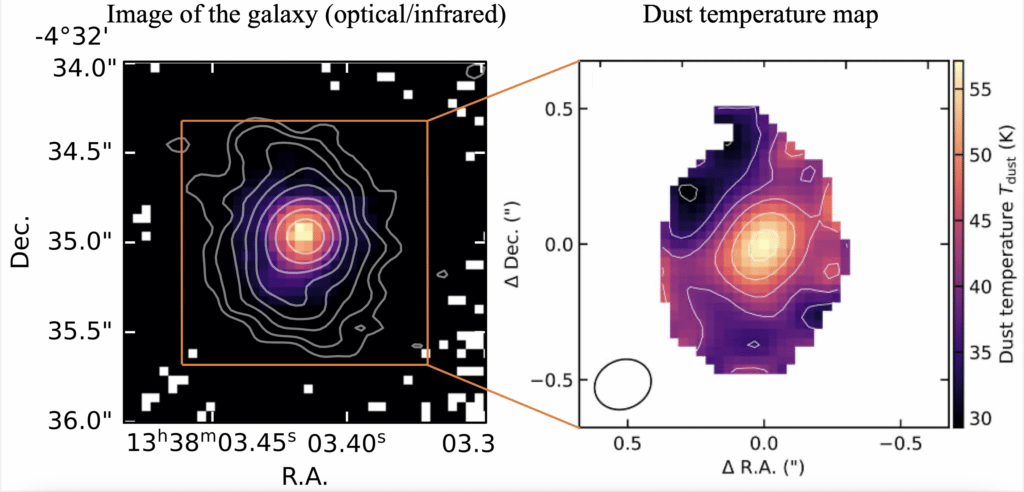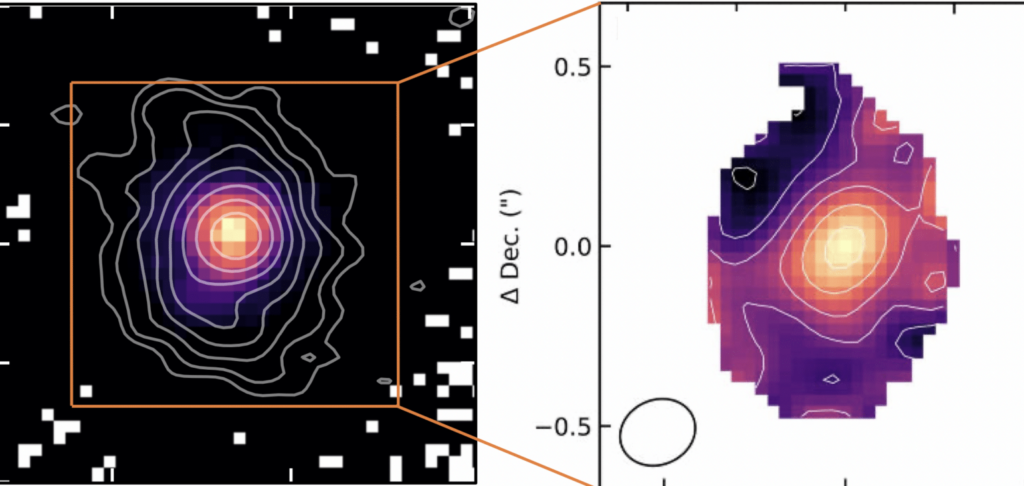A team of astronomers from ASTRO 3D has successfully generated a temperature map of one of the oldest spiral galaxies in the universe. This breakthrough research provides crucial insights into the galaxy’s growth rate and reveals distinct heat sources within its structure.
The findings, published in Monthly Notices of the Royal Astronomical Society, offer a detailed understanding of temperature variations in individual areas of the galaxy, previously unexplored by scientists.
“The temperature of a galaxy’s dust can vary greatly depending on its region. By mapping the temperature variations, we can determine how much heat is coming from individual sources, unlike previous studies that provided only a general temperature measurement for entire galaxies,” says study lead author Dr. Takafumi Tsukui, of the Australian National University (ANU) in Canberra, in a statement.
The temperature analysis demonstrates a clear distinction between warm dust in the central region, originating from the galaxy’s supermassive black hole, and colder dust in the outer region, likely heated by newly-formed stars in the rotating disk surrounding the galaxy. This differentiation allows researchers to gain insights into the growth rate of both the galaxy and its central black hole.
Supermassive black holes are commonly found at the center of most galaxies, and they are believed to grow in mass as the galaxy evolves. The gas that accretes onto the black hole undergoes heating through collisions of fast-moving particles, sometimes outshining the stellar body of the galaxy itself. “The heating energy from the black hole reflects the gas being fed into it and the black hole’s growth rate, while the heating energy from star formation reflects the number of newly forming stars in the galaxy – the galaxy’s growth rate,” explains Dr. Tsukui.
This significant research was made possible by the Atacama Large Millimeter/submillimeter Array (ALMA) telescope operated by the European Southern Observatory (ESO) in Chile. ALMA’s remarkable mapping capabilities allowed scientists to study the 12-billion-year-old galaxy and differentiate the dust heated by the central supermassive black hole from that in the underlying host galaxy.

Professor Emma Ryan-Weber, Director of Astro3D, praises ALMA’s instrumental role in the study: “ALMA is the most powerful array for measuring millimeter and submillimeter radiation. It’s incredible that ALMA can examine a galaxy that existed 12 billion years ago and separate the image into two components – one from dust heated by the central supermassive hole and the other from the dust in the underlying host galaxy.”
The research conducted by the ASTRO 3D team highlights the importance of international collaborations and advanced technology in advancing our understanding of the Universe. ALMA, with its 66 high-precision antennas spread over vast distances, represents the largest ground-based astronomical project, enabling the detection of faint light from some of the coldest objects in the cosmos.
By unraveling the temperature variations within ancient galaxies, scientists take a significant step forward in understanding the evolution and growth of celestial bodies, deepening our knowledge of the vast cosmos that surrounds us.












